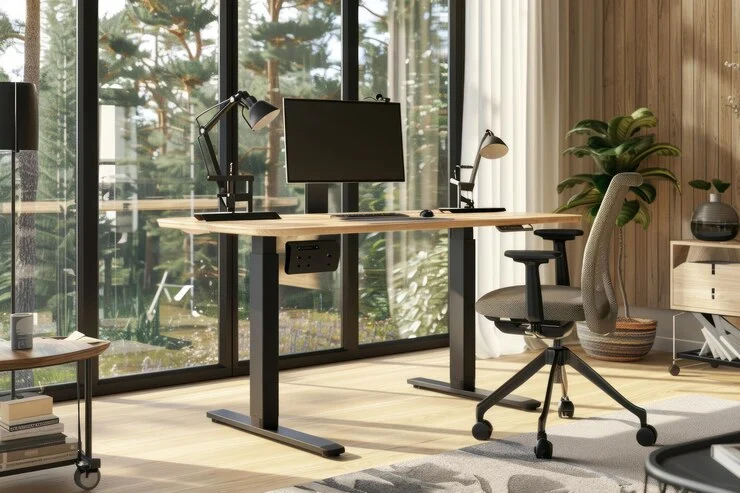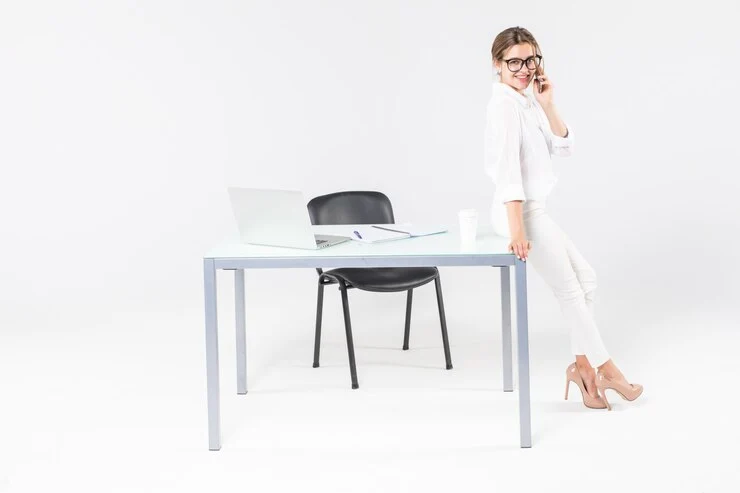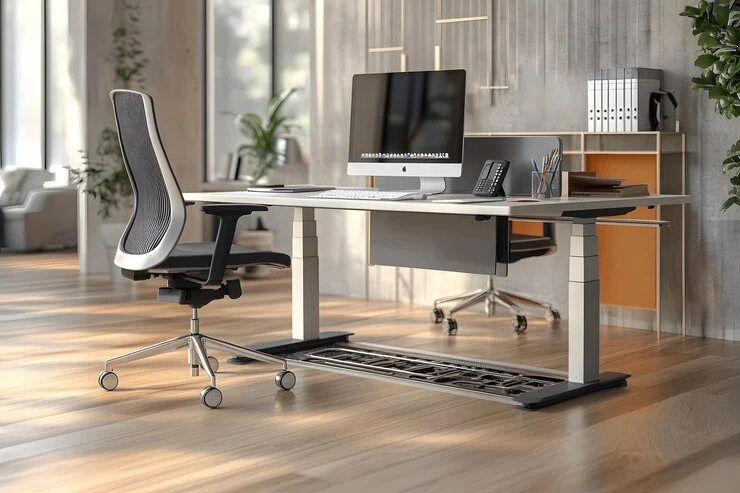Metal desk legs might seem like a simple component of furniture, but they play a massive role in both functionality and aesthetics. Whether you’re designing a modern office space or revamping your home workspace, choosing the right desk legs is crucial. So, why metal? It’s sleek, durable, and incredibly versatile qualities you just don’t get with wood or plastic alternatives. Here, we’ll break down everything you need to know about metal desk legs, how to choose the best option, and what trends to expect in 2024.
The Benefits of Metal Desk Legs
Durability and Longevity
One of the most compelling reasons to opt for metal desk legs is their durability. Unlike wood, which can warp or crack over time, metal stands the test of time. Desk legs made from steel or iron can handle heavy loads, making them perfect for larger desks or workstations where strength is a must.
Aesthetic Appeal
Metal brings a minimalist, industrial vibe to any space. Its sleek lines and polished finishes can make even the simplest desk stand out. Plus, metal desk legs come in various shapes and designs, from thin, elegant legs to bold, geometric structures. This adaptability means that you can find a style that complements your decor, whether it’s modern, rustic, or somewhere in between.
Versatility in Design
Another huge benefit is how versatile metal is in design. From adjustable heights to different finishes (chrome, black matte, brushed steel), metal desk legs cater to various tastes and needs. Whether you need legs that can adjust to a standing desk or something solid and fixed, metal has you covered.

Types of Metal Desk Legs
Heavy Duty Metal Table Legs
Heavy duty metal table legs provide strong and durable support for large, heavy surfaces like workbenches, industrial tables, or large dining tables. Designed to handle significant weight, these legs are built from high-quality steel or iron, ensuring your table stays stable and sturdy, even under heavy use. Whether for a home workshop or a commercial setting, heavy-duty metal legs offer long-lasting performance with a sleek, modern look.
Metal Desk Legs with Shelf
Metal desk legs with a built-in shelf offer the perfect solution for maximizing storage without compromising aesthetics. These legs typically include a lower shelf that can be used for extra storage, whether for books, office supplies, or decorative items. They provide a modern, minimalist look while adding functionality to your desk. Ideal for smaller spaces, this design helps you maintain a clean, organized workspace.
Hairpin Legs
Hairpin legs are a classic choice for anyone looking to add a mid-century modern touch to their space. These slender, U-shaped legs bring a sense of elegance without overpowering the desk. They’re perfect for small, minimalist desks but are also sturdy enough to support larger tabletops.
Trestle Legs
Trestle legs offer a more industrial, bold look. These legs usually consist of two or more angled metal supports connected by a horizontal bar. They provide excellent stability, especially for wider or longer desks, and are often seen in creative or collaborative workspaces.
Pedestal Legs
Pedestal legs typically come as a single column that supports the entire desk. They are space-saving and ideal for corner desks or desks that don’t require a lot of legroom. Pedestal legs are often used in executive-style desks, adding a polished, high-end touch.
Adjustable Desk Legs
Adjustable legs are perfect for those who prioritize ergonomics. Whether you need a sit-to-stand desk or want to ensure that your desk is at the ideal height, these legs provide flexibility. Plus, many come with easy-to-use mechanisms like hand cranks or electric motors, making them convenient for daily use.
Best Materials for Metal Desk Legs
Steel
Steel is by far the most common material for metal legs. It’s incredibly strong and durable, yet it can be manipulated into various shapes and designs. Steel desk legs can be powder-coated in different finishes, from sleek matte black to shiny chrome, allowing for customization.
Aluminum
Aluminum is lightweight yet sturdy, making it a great option for desks that might need to be moved around. It’s also highly resistant to rust, which makes it an excellent choice for outdoor furniture or desks placed in more humid environments.
Iron
Iron legs are all about strength and style. Often featured in industrial design, iron has a heavier, more grounded feel than aluminum or steel. However, it’s important to treat iron properly to prevent rust, especially if you live in a humid area.
How to Choose the Right Metal Desk Legs
Metal Desk Legs Home Depot
Home Depot offers a wide range of metal desk legs that combine style, affordability, and durability. Whether you prefer industrial, modern, or minimalist designs, there are plenty of options to match your style. These legs come in a variety of sizes and finishes, making it simple to pair them with any tabletop. Home Depot’s selection also caters to different budgets, offering both premium and cost-effective solutions for DIY desk projects.
Matching Your Desk’s Purpose
Before selecting metal legs, consider the desk’s intended use. A home office desk might benefit from hairpin legs for a chic, minimalist look, while a workstation that holds heavy equipment would be better off with trestle or pedestal legs.
Height and Adjustability Considerations
Desk height is crucial for comfort and productivity. If multiple people will use the desk or if you plan to use it for different tasks (like sitting and standing), opt for adjustable legs. Otherwise, ensure that the fixed legs are the right height for your chair and ergonomic setup.
Compatibility with Desktop Surfaces
Metal legs can be paired with a variety of desktop materials, from glass to wood. However, ensure that the legs you choose are compatible with the weight and dimensions of your desk. Heavier materials like solid wood may require thicker, more robust legs for stability.

DIY Metal Desk Legs vs. Pre-made Options
Pros of DIY
Creating your own metal desk legs allows for full customization. You can design the exact shape, height, and finish you want, resulting in a unique piece of furniture. DIY options also give you the satisfaction of building something from scratch, which is great if you’re handy with tools.
Cons of DIY
However, DIY isn’t for everyone. Crafting metal desk legs requires specialized tools and skills like welding. It’s also time-consuming and can end up costing more than buying pre-made legs, especially if you make mistakes along the way.
The Future of Metal Desk Legs: What to Expect in 2024
As we move into 2024, expect to see more innovative designs in the world of metal legs. Sustainability will play a key role, with more recycled materials being used in manufacturing. Adjustable and modular legs will continue to grow in popularity, catering to the demand for flexible, ergonomic workspaces.
Additionally, we might see smart desk legs that integrate with technology, offering features like built-in chargers or height adjustment via smartphone apps. The future of metal legs is not just functional—it’s interactive.
Conclusion
Metal desk legs offer a perfect balance of form and function. Whether you’re after a minimalist, industrial look or need something sturdy and durable, metal legs can meet your needs. With options ranging from sleek hairpin legs to robust trestle designs, there’s something for everyone. As trends evolve and technology advances, metal legs will continue to be a staple in modern workspace design.
FAQs
1. What Are Metal Desk Legs Made Of?
Metal desk legs are usually made from steel, iron, or aluminum, offering strength and durability. These materials are often coated to prevent rust and enhance appearance.
2. What Can I Use Instead of Desk Legs?
You can use cabinets, sawhorses, or trestles instead of traditional desk legs. Wall-mounted desks are also an option to save floor space.
3. What Are the Benefits of a Metal Desk?
Metal desks are durable, stable, and offer a modern look. They can support heavy items and are easy to clean, making them ideal for both home and office use.
4. What Is the Best Material for Table Legs?
Steel and iron are best for heavy-duty tables, while aluminum works for lightweight designs. Wood is a classic option, offering both style and sturdiness.




